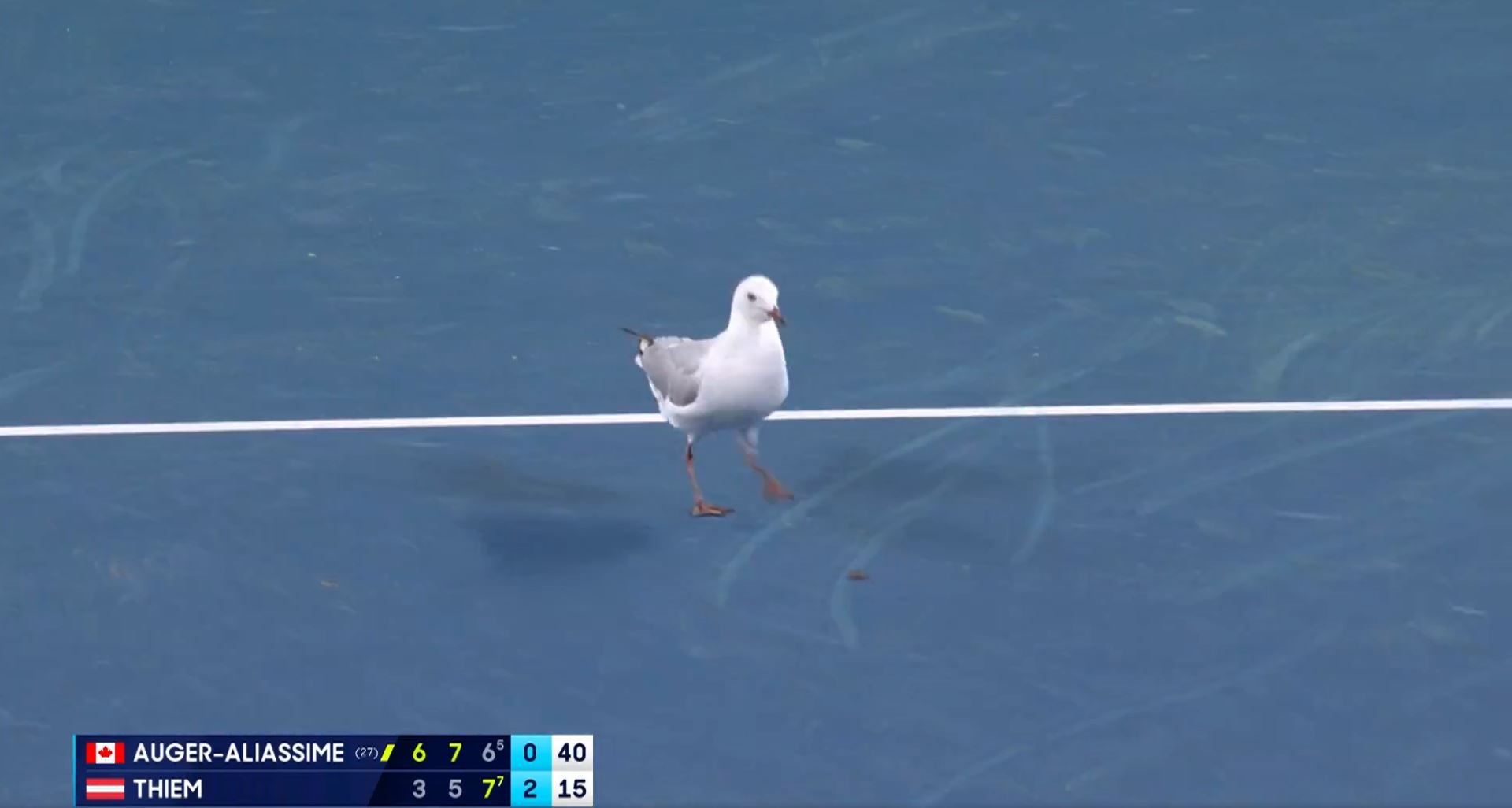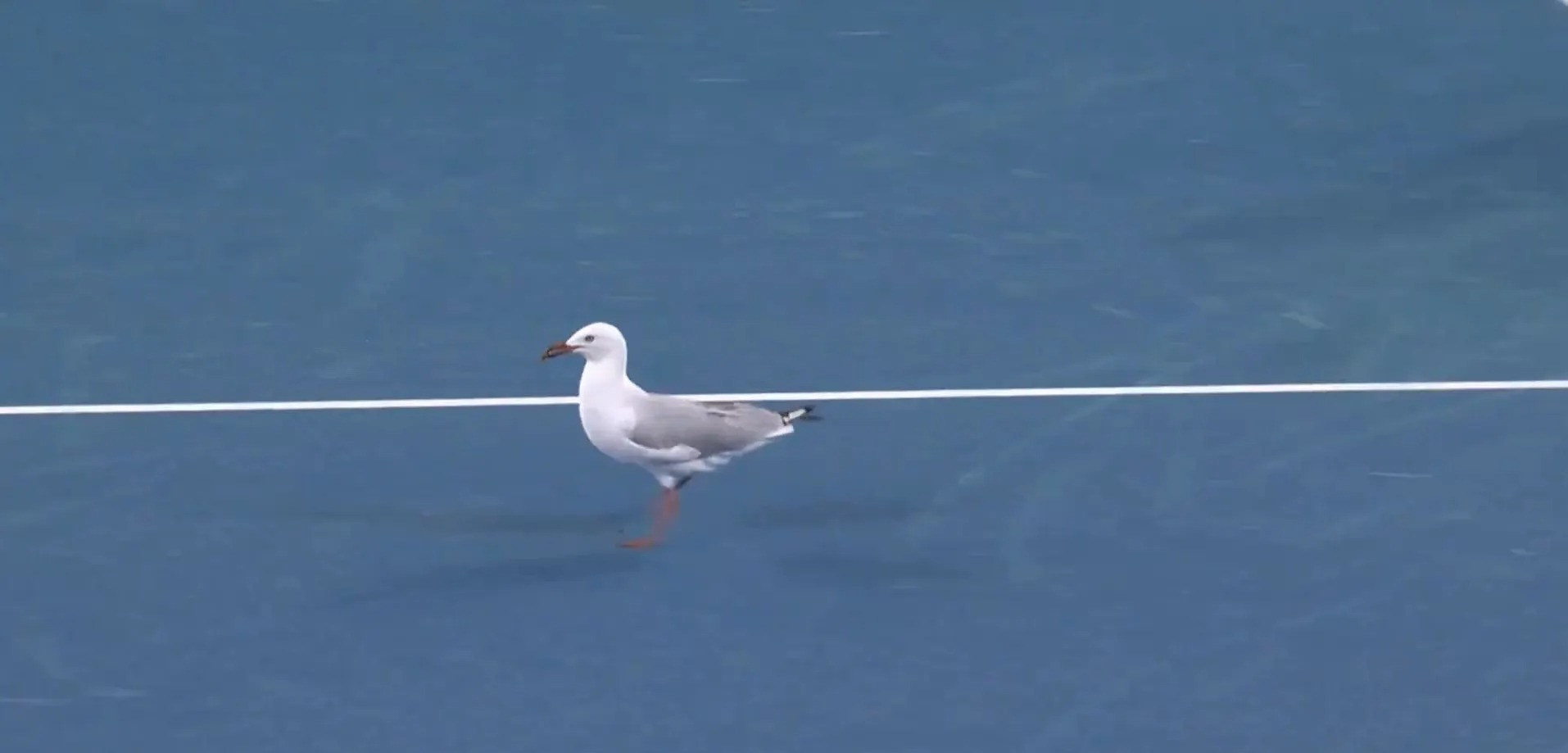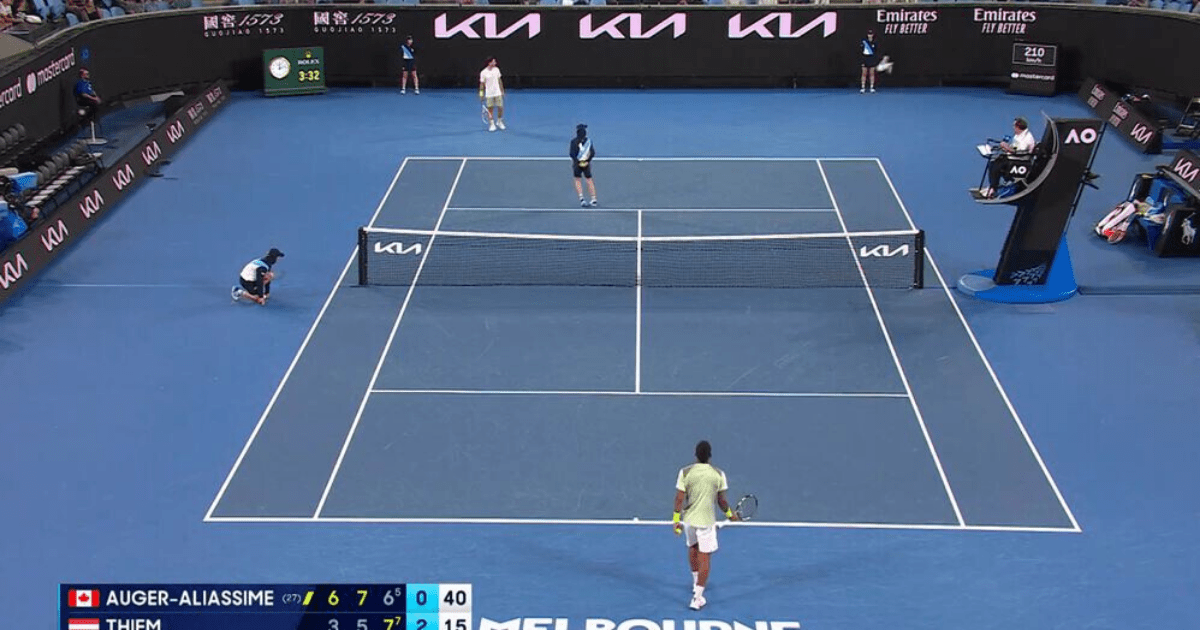Unexpected Intruder
A mischievous seagull caused chaos during two tennis matches at the Australian Open, stealing the spotlight from the players.
First Match Disruption
The seagull first invaded the match between Dominic Thiem and Felix Auger-Aliassime, landing on the court and interrupting play.
A Little Stroll
The bird took a leisurely walk across the court, halting the match until a ball girl helped it fly away.
Unwelcome Return
Just when officials thought they had gotten rid of the intruder, the seagull reappeared and flew all over the court, much to the amusement of the crowd.

Second Match Interruption
The seagull then made its way to Court 3 as Jan-Lennard Struff and Rinky Hijikata were preparing for match point, but this time its visit was shorter.
Tennis Fans Left in Stitches
Viewers from around the world were left stunned and entertained by the hilarious antics of the seagull during the Australian Open matches.
One fan tweeted, "She's the main star," while another commented, "Now isn't a great time, mate…"
Tennis enthusiasts could not help but find the bird's unexpected appearances adorable, with comments like, "So cute he's just checking out the match" and "Cute bird."

Despite the interruptions, Auger-Aliassime went on to eliminate Thiem, and Struff defeated Hijikata.
Frequently Asked Questions
Can someone play tennis late and become a professional player?
While it is more challenging, it is not impossible for someone to start playing tennis at a later age and still achieve professional status. Success depends on an individual’s athletic abilities, work ethic, commitment, and accessing quality coaching and competitive opportunities. Late starters will need to engage in highly focused and intensive training, and the path may be more arduous, but with talent and perseverance, reaching a professional level is within the realm of possibility.
How does a top-level tennis player’s daily training look?
The daily training regime of a top-level tennis player is both rigorous, and meticulously organized. It usually involves several hours of court time, with an emphasis on tactical drills, technical drills and match situations. Additionally, players engage in fitness sessions tailored to enhance strength, agility, and endurance, complemented by flexibility and recovery activities, such as stretching, massage, or physiotherapy. The importance of proper nutrition and psychological coaching is also a key component to ensuring that athletes are able to maintain their peak performance, both mentally and physically.
How do mental and psychological aspects factor into tennis training?
Tennis requires mental and psychological training as much as physical training. Tennis players must learn how to handle stress, focus and the emotional highs or lows that come with competition. Many players use techniques such as mental rehearsals, visualization and goal-setting. A sports psychologist can assist players in building resilience, developing coping strategies to deal with pressure, and elevating their mental game so that it matches their physical prowess.
When can a player start training to improve their chances of becoming a pro?
There is no specific age for beginning professional tennis training, but starting early gives you an advantage. Many professional players begin training between the ages of 4 and 7. Early development allows players to build a solid foundation of skills, technique, and coordination. But it’s also important to maintain a balance between training and childhood development, to encourage a love of the sport without burnout or injury.
What type fitness training is most important for tennis athletes?
Tennis is an intense sport that demands a combination aerobic endurance, anaerobic strength and power, as well as speed. Tennis fitness training involves cardiovascular exercises that improve endurance and strength, plyometrics exercises and explosive movements for speed and power as well as agility exercises designed to improve footwork. The core stability exercises and balance drills are important for developing the muscular endurance, coordination, and strength necessary to handle the physical demands in tennis.
Statistics
- Approximately 70% of a professional tennis player’s training time is devoted to developing technique and on-court strategies.
- Strength and conditioning coaches emphasize core strength, noting that an increase in core stability can improve shot accuracy by up to 43%.
- On average, it’s estimated that only 1 in 5000 high-level junior tennis players will develop into internationally ranked professionals.
- Research indicates that junior tennis players who compete in international tournaments gain significant psychological advantage and experience, with participation leading to a 50% better transition into professional rankings.
- Top tennis players typically train for 4 to 6 hours per day, divided between on-court practice and fitness training.
External Links
itftennis.com
wilsontennis.com
optimumtennis.net
atptour.com
topendsports.com
How To
How to effectively recover after intense tennis workouts
It is important to recover properly after an intense tennis session in order to avoid injury and prepare your body for future sessions. To lower your pulse rate, begin with a phase of cooling down that involves light cardio. Static stretching will promote flexibility and help reduce muscle tension. You can use recovery techniques, such as foam-rolling or massages, to reduce muscle soreness. They also help remove lactic acids. Hydration is essential; replenish fluids lost while exercising and electrolytes as needed. You should also eat carbohydrates and protein after your workout to help repair and restore muscle glycogen. Finally, ensure you get adequate rest and consider incorporating rest days into your training schedule to allow full recovery.

